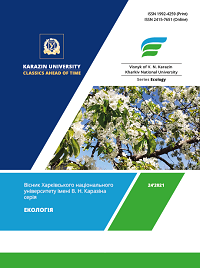Use of Biotesting Methods for Assessing the Ecological Condition of Surface Waters
Abstract
Selection of the optimal set of biotesting methods for assessing the environmental consequences of chemical pollution of surface waters; study of the system of environmental liability, which operates in European and other foreign countries, and national regulations on the recovery of damages for violations of water legislation. The analysis of foreign and national sources on the use of biotesting techniques to assess the ecological status of surface waters and determine the toxic properties of water and chemicals. In world practice, a biotesting method is used to obtain data on the effects of hazardous toxic chemicals on aquatic ecosystems. Biotests are available and cheap (when using specially designed modifications for practical needs), do not require special training of performers and can be easily mastered in practical laboratories.
To assess and control the quality of surface waters and their sources of pollution in accordance with the recommendations of the Water Framework Directive 2000/60 / EC, biotesting techniques are used using a "basic set of taxa" - algae, crustaceans and fish.
Downloads
Published
Issue
Section
License
Copyright (c) 2021 Крайнюкова А. М., Крайнюков О. М., Кривицька І. А.

This work is licensed under a Creative Commons Attribution 4.0 International License.
Authors reserve the right of attribution for the submitted manuscript, while transferring to the Journal the right to publish the article under the Creative Commons Attribution License. This license allows free distribution of the published work under the condition of proper attribution of the original authors and the initial publication source (i.e. the Journal)Authors have the right to enter into separate agreements for additional non-exclusive distribution of the work in the form it was published in the Journal (such as publishing the article on the institutional website or as a part of a monograph), provided the original publication in this Journal is properly referenced
The Journal allows and encourages online publication of the manuscripts (such as on personal web pages), even when such a manuscript is still under editorial consideration, since it allows for a productive scientific discussion and better citation dynamics (see The Effect of Open Access).

